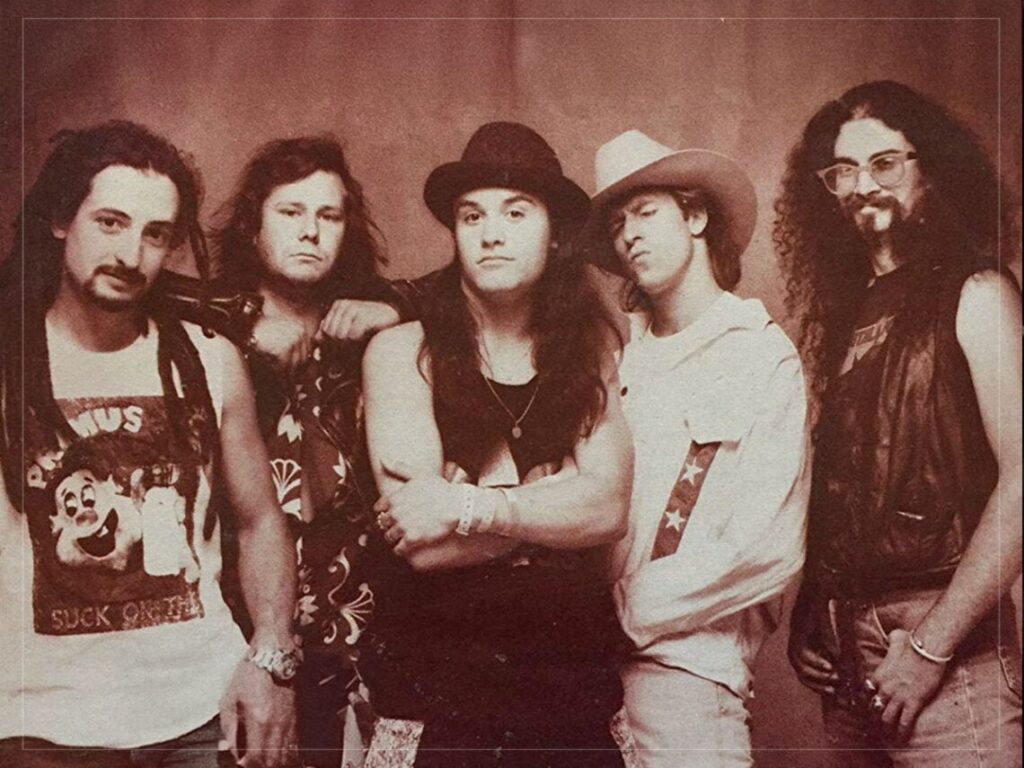How DIIV defined a generation of guitar bands
 Posted On
Posted On
(Credits: Far Out / Shervin Lainez)
The final years of the 2000s saw culture undergoing yet another metamorphosis. With the indie boom barely hanging on, new rave peaking, metalcore taking the reins from emo, 1980s-inspired electropop dominating, and dance music surging to new heights, the years from roughly 2008 to 2011 marked the undeniable rise of postmodernity. Fuelled by the proliferation of the internet and streaming platforms, musical and aesthetic tastes began to shift rapidly. Suddenly, the likes of The Strokes, The Libertines, and Boy Kill Boy were no longer the cultural epicentre. Among the new wave of artists to emerge, DIIV made a big splash in the early 2010s, ultimately becoming defining figures for a new generation of guitar bands.
Formed in 2011 by Beach Fossils and Soft Black member Zachary Cole Smith, who wanted a vehicle for his own songs, DIIV was originally named “Dive”, after the Nirvana song of the same name. Later, explaining that the word appealed to the members because they were all water signs, the name would be significant in two additional ways.
Taking inspiration from Nirvana set DIIV apart from the 1970s-obsessed indie acts of the previous decade. Instead, they drew from a lineage of offset guitars, alternative rock, effects pedals, and shoegaze, as well as krautrock and post-punk, crafting a much more substantial and distinctive musical palette. Additionally, the band’s hipster aesthetic—with oversized shirts, baggy pants, and beanies precariously perched atop their heads—stood in stark contrast to the skinny-trousered, winkle-picker-shod, skinny-tie-clad look that had dominated before.
Thanks to their tastemaking label, Captured Tracks, along with labelmates like Beach Fossils—who emerged from a similar context—and acts like hardcore/shoegaze fusionists Whirr, as well as shifting cultural tastes driven by platforms like Tumblr, DIIV solidified their position at the forefront of a generation’s sonic landscape. They symbolised a shift in both guitar music and hipster culture, becoming the band for those just a bit too young to fully experience The Strokes, Yeah Yeah Yeahs, and The Rakes in their prime, even if their tracks were staples on MP3 players and iPods.
Their well-publicised struggles with heroin might have threatened to derail the whole project – as did Smith’s high-profile relationship with Sky Ferreira – but their music symbolised the shift in rock music, and they built a dedicated fanbase quickly.

DIIV weren’t just an antidote to the stagnant indie bands of the previous decade—with their clean guitar tones, hollow-body guitars, recycled rock star clichés, and lightweight music—but a reflection of a new era. Their multifaceted influences, drawn from an array of bands now easily accessible through the internet, captured the essence of this shifting epoch. No longer fixated solely on the late 1970s and the first wave of punk, listeners were discovering artists like My Bloody Valentine, Can, and Neu! Thanks to bands like DIIV, a broader sonic landscape emerged, introducing a whole new spectrum of sounds to a new generation.
This is where the second element of their name being significant comes in. Not only was the name DIIV stylised perfectly for this new generation, but its meaning semantically embodied the washing effects, the flowing, hypnotic rhythms, melodic guitars, and often hushed streams of Smith’s vocals. Their 2012 debut, Oshin, confirmed that their first handful of singles were not a fluke.
The likes of ‘How Long Have You Know’, with its heady riff and middle section, the widely influential goth-leaning ‘Doused’ with its ominous, chiming riff, and the psychedelic ‘Air Conditioning’, became anthems for a new generation of guitar bands who were rapt by this flowing, enchanting sound. The front cover perfectly summed it up, with its snapshot of the sea, calming, pale blue background and the image of the strange bird-like creature pulling the character, the listener, off into their world and guitar music’s future at that.
After Oshin was released in June 2012, groups with offset guitars, baggy trousers, white socks, trainers and an array of pedals began springing up worldwide. Things like the ephemeral B-Town scene came and went, bands like Bdrmm were given the inspiration they needed to create their own take on the sound before breaking off and doing something truly original, and this latest wave of shoegaze acts, many of whom were not yet old enough to enjoy this chapter of DIIV, would later find their perceptions transformed when they discovered them online just a few years later.
Outside of hardcore punk, which was taking things up a gear concurrently, DIIV were the vanguard of a refreshed alternative culture. Against the odds, they have continued to evolve and demonstrate their scope with their ensuing three albums. With fans in everyone from Fontaines DC to Fred Durst, they’ve shaken off the ill feeling, the doubters, and continued to push themselves creatively. There’s no doubt they’re one of the most consequential bands of the 21st century.
Related Topics


